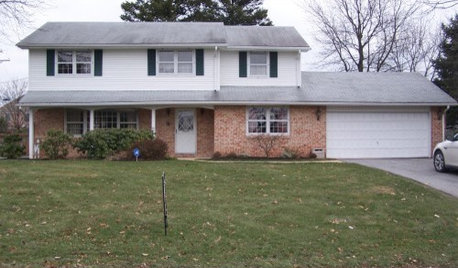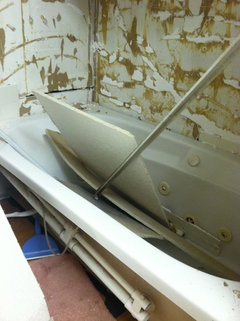Bath & shower wall repair questions.
ks_toolgirl
12 years ago
Featured Answer
Comments (12)
columbusguy1
12 years agoRelated Professionals
Federal Heights Kitchen & Bathroom Designers · Manchester Kitchen & Bathroom Designers · Philadelphia Kitchen & Bathroom Designers · Green Bay Kitchen & Bathroom Remodelers · Hickory Kitchen & Bathroom Remodelers · New Port Richey East Kitchen & Bathroom Remodelers · Pasadena Kitchen & Bathroom Remodelers · Phoenix Kitchen & Bathroom Remodelers · Red Bank Kitchen & Bathroom Remodelers · Vashon Kitchen & Bathroom Remodelers · Vista Kitchen & Bathroom Remodelers · Baton Rouge Architects & Building Designers · Bull Run Architects & Building Designers · Saint Andrews Architects & Building Designers · Washington Architects & Building Designersks_toolgirl
12 years agocolumbusguy1
12 years agoks_toolgirl
12 years agocolumbusguy1
12 years agoks_toolgirl
12 years agocolumbusguy1
12 years agoks_toolgirl
12 years agocolumbusguy1
12 years agoBilll
12 years agokarinl
12 years ago
Related Stories

REMODELING GUIDESSurvive Your Home Remodel: 11 Must-Ask Questions
Plan ahead to keep minor hassles from turning into major headaches during an extensive renovation
Full Story
GREEN BUILDINGConsidering Concrete Floors? 3 Green-Minded Questions to Ask
Learn what’s in your concrete and about sustainability to make a healthy choice for your home and the earth
Full Story
MOVINGHiring a Home Inspector? Ask These 10 Questions
How to make sure the pro who performs your home inspection is properly qualified and insured, so you can protect your big investment
Full Story

BATHROOM TILEQuick Fix: Repair Cracked Bathroom Grout
Banish an eyesore and safeguard your bathroom from water damage in 30 minutes or less with this DIY repair
Full Story
REMODELING GUIDESConsidering a Fixer-Upper? 15 Questions to Ask First
Learn about the hidden costs and treasures of older homes to avoid budget surprises and accidentally tossing valuable features
Full Story
DOORS5 Questions to Ask Before Installing a Barn Door
Find out whether that barn door you love is the right solution for your space
Full Story
MOST POPULAR8 Questions to Ask Yourself Before Meeting With Your Designer
Thinking in advance about how you use your space will get your first design consultation off to its best start
Full Story
REMODELING GUIDES9 Hard Questions to Ask When Shopping for Stone
Learn all about stone sizes, cracks, color issues and more so problems don't chip away at your design happiness later
Full Story
GREEN DECORATING8 Questions to Help You See Through Green Hype
With the ecofriendly bandwagon picking up some dubious passengers, here's how to tell truly green products and services from the imposters
Full StorySponsored
Franklin County's Custom Kitchen & Bath Designs for Everyday Living
More Discussions











Billl